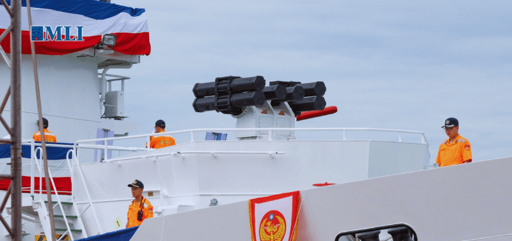- 50 Posts
- 31 Comments
I fully agree.
In addition, we must not forget that there is massive slave-like labour in Chinese supply chains - within China as well as abroad. As I posted in another thread, Brazil is just one recent example for that:
[In Brazil], in the same month that Chinese BYD’s car carrier arrived in the country, Brazilian prosecutors announced plans to sue BYD and two of its contractors for ‘slave like conditions’ at a factory site. A task force led by Brazilian prosecutors said it rescued 163 Chinese nationals working in “slavery-like” conditions at a construction site […] where Chinese electric vehicle company BYD is building a factory.
The [Brazilian] Labor Prosecutor’s Office released videos of the dorms where the [Chinese] construction workers were staying, which showed beds with no mattresses and rooms without any places for the workers to store their personal belongings.
Officials said [BYD contractor] Jinjiang […] had confiscated the workers’ passports and held 60% of their wages. Those who quit would be forced to pay the company for their airfare from China, and for their return ticket, the statement said.
Prosecutors said the sanitary situation at BYD’s site in Camaçari was especially critical, with only one toilet for every 31 workers, forcing them to wake up at 4 a.m. to line up and get ready to leave for work at 5:30 a.m.
I don’t think that Canadians want ChEaP cArS made by slave-labour.

 1·2 days ago
1·2 days agoRunning out of arguments?

 1·2 days ago
1·2 days agoCheck what percentage of a typical vehicle cost comes from labour. Then from that, check the manufacturing wages in different locations and scale the labour cost by that. That’s will give you the ballpark labour cost advantage between. Then compare that with equivalent vehicle prices.
Great. Can you please give me reliable numbers so that we can ‘check’ them?
The point is that China’s supply chain is a black box, and they have been opposing any form of transparency for years.
On the other hand, there is reliable information of forced labour (not exclusively, but foremost in China’s northwestern Xinjiang region, if we speak of cars). So your comment is a distraction.
We must clearly say it: There is massive slave-like labour in Chinese supply chains - within China as well as abroad.
To provide an example:
[In Brazil], in the same month that Chinese BYD’s car carrier arrived in the country, Brazilian prosecutors announced plans to sue BYD and two of its contractors for ‘slave like conditions’ at a factory site. A task force led by Brazilian prosecutors said it rescued 163 Chinese nationals working in “slavery-like” conditions at a construction site […] where Chinese electric vehicle company BYD is building a factory.
The [Brazilian] Labor Prosecutor’s Office released videos of the dorms where the [Chinese] construction workers were staying, which showed beds with no mattresses and rooms without any places for the workers to store their personal belongings.
Officials said [BYD contractor] Jinjiang […] had confiscated the workers’ passports and held 60% of their wages. Those who quit would be forced to pay the company for their airfare from China, and for their return ticket, the statement said.
Prosecutors said the sanitary situation at BYD’s site in Camaçari was especially critical, with only one toilet for every 31 workers, forcing them to wake up at 4 a.m. to line up and get ready to leave for work at 5:30 a.m.

 82·5 days ago
82·5 days agoYeah, just that you can see how the flood of ChEaP cHiAnA cArS are made, a recent example from Brazil:
[In Brazil], in the same month that Chinese BYD’s car carrier arrived in the country, Brazilian prosecutors announced plans to sue BYD and two of its contractors for ‘slave like conditions’ at a factory site. A task force led by Brazilian prosecutors said it rescued 163 Chinese nationals working in “slavery-like” conditions at a construction site […] where Chinese electric vehicle company BYD is building a factory.
The [Brazilian] Labor Prosecutor’s Office released videos of the dorms where the [Chinese] construction workers were staying, which showed beds with no mattresses and rooms without any places for the workers to store their personal belongings.
Officials said [BYD contractor] Jinjiang […] had confiscated the workers’ passports and held 60% of their wages. Those who quit would be forced to pay the company for their airfare from China, and for their return ticket, the statement said.
Prosecutors said the sanitary situation at BYD’s site in Camaçari was especially critical, with only one toilet for every 31 workers, forcing them to wake up at 4 a.m. to line up and get ready to leave for work at 5:30 a.m.

 11·5 days ago
11·5 days agoThere’s 2 accounts from the same instance that started posting that stuff recently.
Yeah, but there are not just two? I mean, on lemmygrad and hexbear you’ll find more than two from the same instance posting the same stuff, and they have been doing it not just recently. No?

 14·6 days ago
14·6 days agoTo provide one example among many:
[In Brazil], in the same month that Chinese BYD’s car carrier arrived in the country, Brazilian prosecutors announced plans to sue BYD and two of its contractors for ‘slave like conditions’ at a factory site. A task force led by Brazilian prosecutors said it rescued 163 Chinese nationals working in “slavery-like” conditions at a construction site […] where Chinese electric vehicle company BYD is building a factory.
The [Brazilian] Labor Prosecutor’s Office released videos of the dorms where the [Chinese] construction workers were staying, which showed beds with no mattresses and rooms without any places for the workers to store their personal belongings.
Officials said [BYD contractor] Jinjiang […] had confiscated the workers’ passports and held 60% of their wages. Those who quit would be forced to pay the company for their airfare from China, and for their return ticket, the statement said.
Prosecutors said the sanitary situation at BYD’s site in Camaçari was especially critical, with only one toilet for every 31 workers, forcing them to wake up at 4 a.m. to line up and get ready to leave for work at 5:30 a.m.

 35·6 days ago
35·6 days agoDo basic maths (and economics). Learn about the canola market (again, which quality did the September purchase have?). Why did China buy from Australia this time? (Spoiler: It has nothing to do with EVs).
I won’t engage in further discussions if you continue to spam around with pro-China propaganda while making statements that wildly inaccurate.
Addition: I forgot to mention that you continue your propaganda spam in a Trumpean I-am-right-and-everyone-else-is-wrong attitude, something that doesn’t help if you want to engage in a fruitful discussion.

 33·6 days ago
33·6 days agoAnd? Almost all Chinese canola imports come from Canada, Australia hasn’t changed that apparently. Just read the article.
There is also some more wrong with your absurdly weird statement, but you contradict yourself with our own linked source. This is waste of time.

 41·6 days ago
41·6 days agoAustralia also just had big canola purchases from China last month.
Did they? How much canola did they purchase from Australia last month? What quality did it have, especially when China bought it last month (September) from Australia?
I am truly looking forward to your answer here.

 2·8 days ago
2·8 days agoI would personally also consider buying drones from Ukraine
Seems that happens already in some way: Ukraine offers drone tech and battlefield expertise to Australia (archived article link)

 1·8 days ago
1·8 days agoThis is what India’s officials have been saying since July, but Indian imports of Russian crude dipped in the third quarter. I don’t say India should or shouldn’t buy, but what they say and what they doesn’t match if you look at the data.
Addition: Ah, the article is two months old …

 28·8 days ago
28·8 days agoThe US is really becoming more and more authoritarian, but your fixation on the US while ignoring all other authoritarian and fascist threats is telling.

 62·8 days ago
62·8 days agoThe ‘sabre rattling’ has been practiced by China for a long time, and not only against Australia. And China’s claims the Australian aircraft illegally entered its airspace is factually incorrect.
[Edit typo.]

 93·8 days ago
93·8 days agoThis is the same rubbish that is published in Europe and elsewhere. The most obvious issue with this article is that it doesn’t even mention the rising threats by countries like Russia and China (Russia is spending around 8-10% of its GPD, or 40% of its public budget, for military. Numbers for China are hard to guess as the official data is not very reliable).
You can’t publish such an opinion without even mentioning the rising threats.
“To make sense, defence spending has to be linked to needs, not GDP.”
Yeah, exactly. And the needs are increasing.

 93·8 days ago
93·8 days agoYour comment is apparently not accurate. It’s noteworthy that China’s claims over islands and outcrops effect not only Australia, but practically all its neighbours like Philippines, India, Buthan, Nepal, let alone Taiwan.

 22·10 days ago
22·10 days agoBeijing’s industrial strategy—built on state subsidies, export surpluses, currency manipulation, and protection of domestic champions—has tilted the global playing field so sharply that further integration with China now poses real risks to Canada’s competitiveness and prosperity.
The linked op-ed provides a lot of good points explaining why China isn’t a reliable and trusted trade partner. Just read it. There are many good reasons not to drop the tariffs.

 11·10 days ago
11·10 days agonot supported by data
?
the author is Michael Kovrig’s spouse and should factor that into consideration of her biases.
You are -again- accusing others of biases while making unfounded claims with no supporting data and conveying always the same distorted narratives. We should take rather your biases into consideration, no?

 121·13 days ago
121·13 days agoIt’s another sign that shows China’s duties on Canadian canola is nothing but another attempt of economic coercion.












I’m not sure whether I understand your comment. There are many options for partnerships in Asia, e.g., Indonesia, South Korea, Japan, Philippines, and many others. Canada should strengthen ties with them imo.